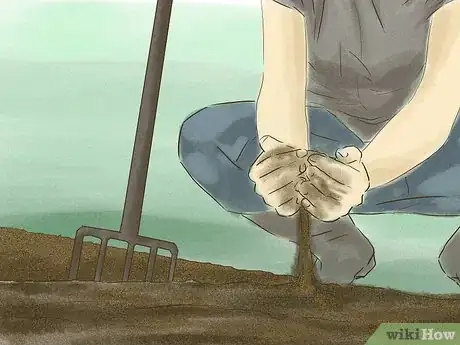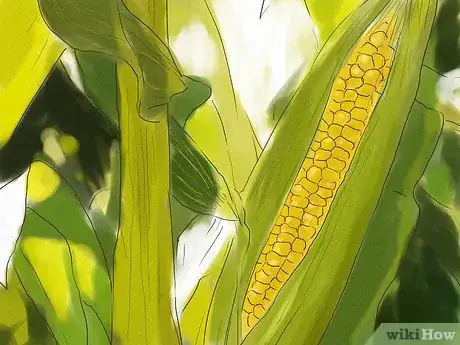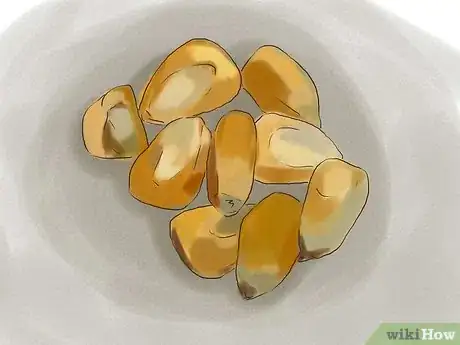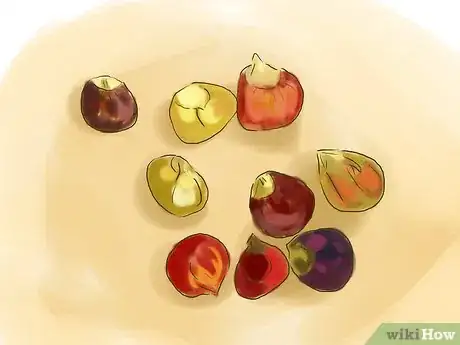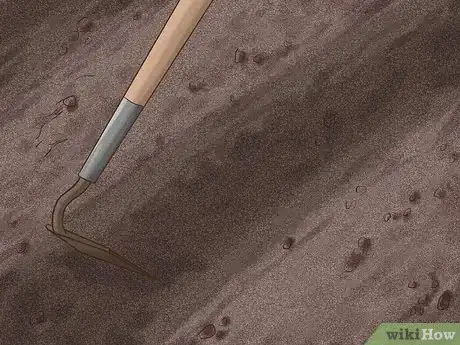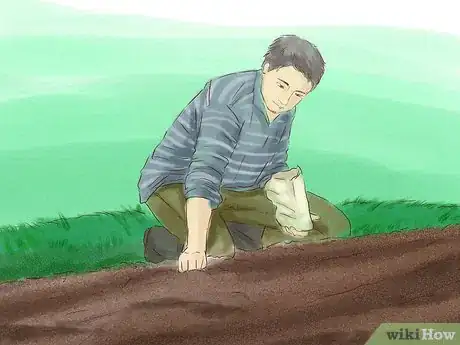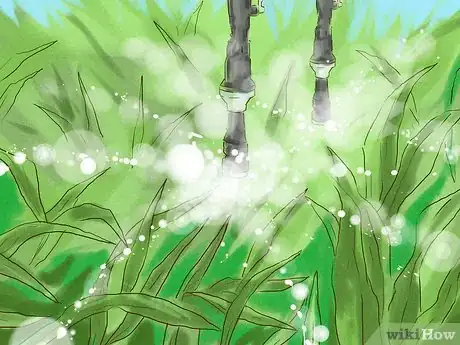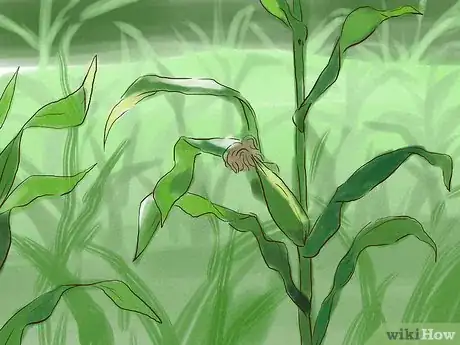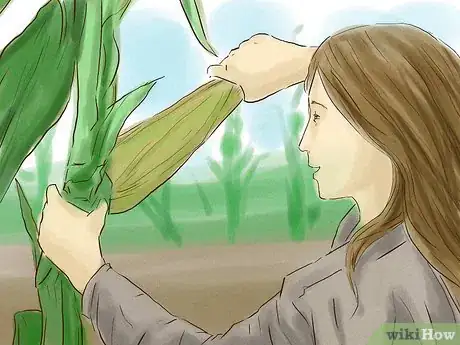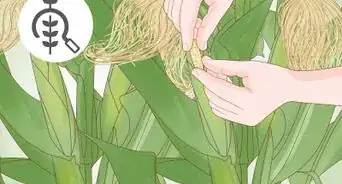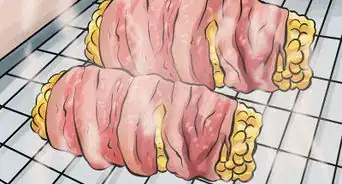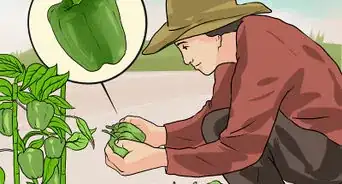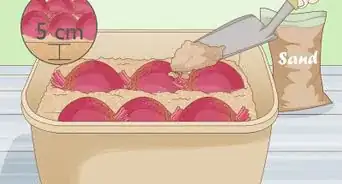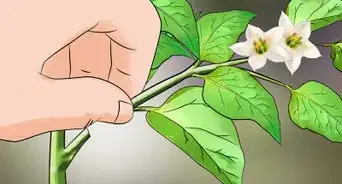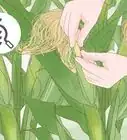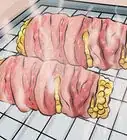This article was co-authored by Andrew Carberry, MPH. Andrew Carberry is a Food Systems Expert and the Senior Program Associate at the Wallace Centere at Winrock International in Little Rock, Arkansas. He has worked in food systems since 2008 and has experience working on farm-to-school projects, food safety programs, and working with local and state coalitions in Arkansas. He is a graduate of the College of William and Mary and holds a Masters degree in public health and nutrition from the University of Tennessee.
This article has been viewed 210,830 times.
Having fresh vegetables from your garden is not only a rewarding process but a great benefit to your health. Growing corn can supplement both your physical health as well as nourish your mental well-being. You can start growing your own corn garden and begin reaping the rewards with a little know-how and elbow grease.
Steps
Choose a Type of Corn
-
1Research the area you plan to plant. It is important to know about the climate and soil type, so as to make preparations for each different kind of corn. Some types of corn prefer warmer/cooler soil and different soil pH levels.[1]
-
2Know how to plant sweet corn. Sweet corn is the classic variety typically eaten on the cob or from a can. It is known for a golden yellow kernel and a light, sweet flavor. Sweet corn is most commonly used in home gardens.
- Standard sweet corn (labeled as 'su' on seed packets) is the most mild of the sweet corns. Over 50% of the sugar contained in standard sweet corn is converted to starch within 24 hours of being picked, so it must be consumed or canned soon after being harvested.
- Sugar enhanced sweet corn (labeled as 'se' on seed packets) is genetically modified to slow the sugar to starch conversion rate, increasing the sweetness and tenderness of the kernels.
- Super sweet corn (labeled as 'sh2' on seed packets) is the sweetest variety available. It's kernels are slightly smaller than other sweet corn varieties, and shrivel when dried.[2]
Advertisement -
3Learn about dent corn. Dent or field corn is not typically grown to eat raw. It is used primarily as feed for animals or for use in making many processed foods. Growing dent corn is beneficial for use on a farm or for selling to other farms.
-
4Understand the basic type of flint corn. Flint corn, also called Indian corn, is characterized by hard, multi-colored kernels. It has uses similar to dent corn, but is not grown as widely in the United States as its preferred habitat is in central and South America. It is often used for its decorative purposes.[3]
Prepare Your Garden
-
1Know when to plant. Depending on your region, you will need to plant seeds at a different time. Typically, the best time to plant is between May and June. Be wary of planting too early, since the seeds will rot if the soil is too cold.[4] If you have a soil thermometer, check the temperature regularly and wait to plant until the soil reaches 65ºF (18ºC).
-
2Choose a location. Corn likes to grow in areas of full sun, so select a garden plot that is out in the open. Try to choose an area relatively free of weeds, as corn has a difficult time competing with them in a bed.
-
3Prepare the soil. Corn prefers soil that is nitrogen rich and well manured.
- If possible, plant in soil that you have already grown beans or peas in, as they help to enrich the soil with more nitrogen.
- Remove all weeds from the area.
- If the soil is below {{convert|60|F}, increase the temperature by covering the ground in black plastic and cutting holes to plant the corn through.[5]
- Add compost or manure to the soil two and four weeks before planting so that it has time to incorporate with the soil.
Grow Your Corn
-
1Plant your corn. For every one person who intends on consuming corn, plant ten to fifteen plants. If each plant is 100% successful, they should produce two ears of corn apiece.
- Corn is wind-pollinated, so it is best to plant it in blocks rather than individual rows so that the pollen has a better chance of germinating.
- Plant the seeds every 3 inches (7.5 cm) along rows, with 24–36 inches (61.0–91.4 cm) of space between rows. Plant at least four rows so the wind can spread pollen between them.[6]
- Plant the seeds 1–2 inches (2.5–5.1 cm) below the surface of the soil, with each plant
- To increase the odds of the seeds germinating, plant 2-3 seeds together at each placement.
- If you grow multiple varieties of corn, be sure to grow them in separate plots to reduce the risk of cross-pollination. Should cross-pollination occur, it would produce tough, starchy kernels.[7]
-
2Water the corn. Corn requires about one inch of water a week, and lax watering can produce ears with many missing kernels. Apply water to the base of the plants to prevent washing away pollen at the top of the plant.[8]
-
3Weed around young plants. Keep the corn weed-free until it is about knee high. After that, your corn should out-compete the weeds on its own.
-
4Wait. As the saying “knee-high by the fourth of July” goes, your corn should be 12–18 inches (30.5–45.7 cm) tall by the beginning of July. The corn is finished growing about three weeks after it develops “tassels” - a dry, brown silk tail at the top of the ear.
-
5Pick your corn and enjoy. The corn is ready to be harvested when the kernels are tightly packed and produce a milky fluid when punctured. Eat immediately after picking for the best flavor and optimum freshness.
Expert Q&A
-
QuestionIs the seed inside the corn kernel or is it the kernel itself? Basically, when I plant the 'seeds' do I plant the kernel, or extract a seed from the kernel and plant that?
 Andrew Carberry, MPHAndrew Carberry is a Food Systems Expert and the Senior Program Associate at the Wallace Centere at Winrock International in Little Rock, Arkansas. He has worked in food systems since 2008 and has experience working on farm-to-school projects, food safety programs, and working with local and state coalitions in Arkansas. He is a graduate of the College of William and Mary and holds a Masters degree in public health and nutrition from the University of Tennessee.
Andrew Carberry, MPHAndrew Carberry is a Food Systems Expert and the Senior Program Associate at the Wallace Centere at Winrock International in Little Rock, Arkansas. He has worked in food systems since 2008 and has experience working on farm-to-school projects, food safety programs, and working with local and state coalitions in Arkansas. He is a graduate of the College of William and Mary and holds a Masters degree in public health and nutrition from the University of Tennessee.
Food Systems Expert The kernel is the seed. If you break the kernel open, the plant won't grow.
The kernel is the seed. If you break the kernel open, the plant won't grow. -
QuestionCan I grow corn in containers and if so, what are the best containers and potting mix?
 Andrew Carberry, MPHAndrew Carberry is a Food Systems Expert and the Senior Program Associate at the Wallace Centere at Winrock International in Little Rock, Arkansas. He has worked in food systems since 2008 and has experience working on farm-to-school projects, food safety programs, and working with local and state coalitions in Arkansas. He is a graduate of the College of William and Mary and holds a Masters degree in public health and nutrition from the University of Tennessee.
Andrew Carberry, MPHAndrew Carberry is a Food Systems Expert and the Senior Program Associate at the Wallace Centere at Winrock International in Little Rock, Arkansas. He has worked in food systems since 2008 and has experience working on farm-to-school projects, food safety programs, and working with local and state coalitions in Arkansas. He is a graduate of the College of William and Mary and holds a Masters degree in public health and nutrition from the University of Tennessee.
Food Systems Expert You can grow four plants in a pot 1 foot deep and 1 foot wide. Use well composted soil, or potting mix formulated to help retain moisture.
You can grow four plants in a pot 1 foot deep and 1 foot wide. Use well composted soil, or potting mix formulated to help retain moisture. -
QuestionWhat is the top tip of the corn for?
 Sander1Community AnswerYou probably mean the male flower. It pollinates the female flowers that grow in the axils of the plant and will produce the corn cobs.
Sander1Community AnswerYou probably mean the male flower. It pollinates the female flowers that grow in the axils of the plant and will produce the corn cobs.
References
- ↑ http://www.westcoastseeds.com/how-to-grow/vegetable-seeds/Corn/
- ↑ http://www.colostate.edu/Depts/CoopExt/4DMG/VegFruit/corn.htm
- ↑ http://www2.kenyon.edu/projects/farmschool/food/corntyp.htm
- ↑ http://www.westcoastseeds.com/how-to-grow/vegetable-seeds/Corn/
- ↑ http://www.colostate.edu/Depts/CoopExt/4DMG/VegFruit/corn.htm
- ↑ https://www.westcoastseeds.com/how-to-grow-guides/grow-corn/
- ↑ http://www.colostate.edu/Depts/CoopExt/4DMG/VegFruit/corn.htm
- ↑ http://www.westcoastseeds.com/how-to-grow/vegetable-seeds/Corn/
- Videos provided by Kaye Kittrell | Late Bloomer Urban Organic Garden Show
About This Article
To grow corn from seed, choose a planting location that gets continual sun, remove all weeds from the area, and till the soil with compost or manure. Then, plant the seeds in rows every 3 inches, with 24 to 36 inches between rows. Make sure the seeds are 1 to 2 inches deep in the soil with 2-3 seeds in the hole. After planting, water the corn near the soil with about 1 inch of water per week until harvesting. Your corn will be ready to harvest about 3 weeks after tassels grow from the top of the ear of corn! For advice from our Professional Gardener on the best type of corn to choose for your garden, read on!
